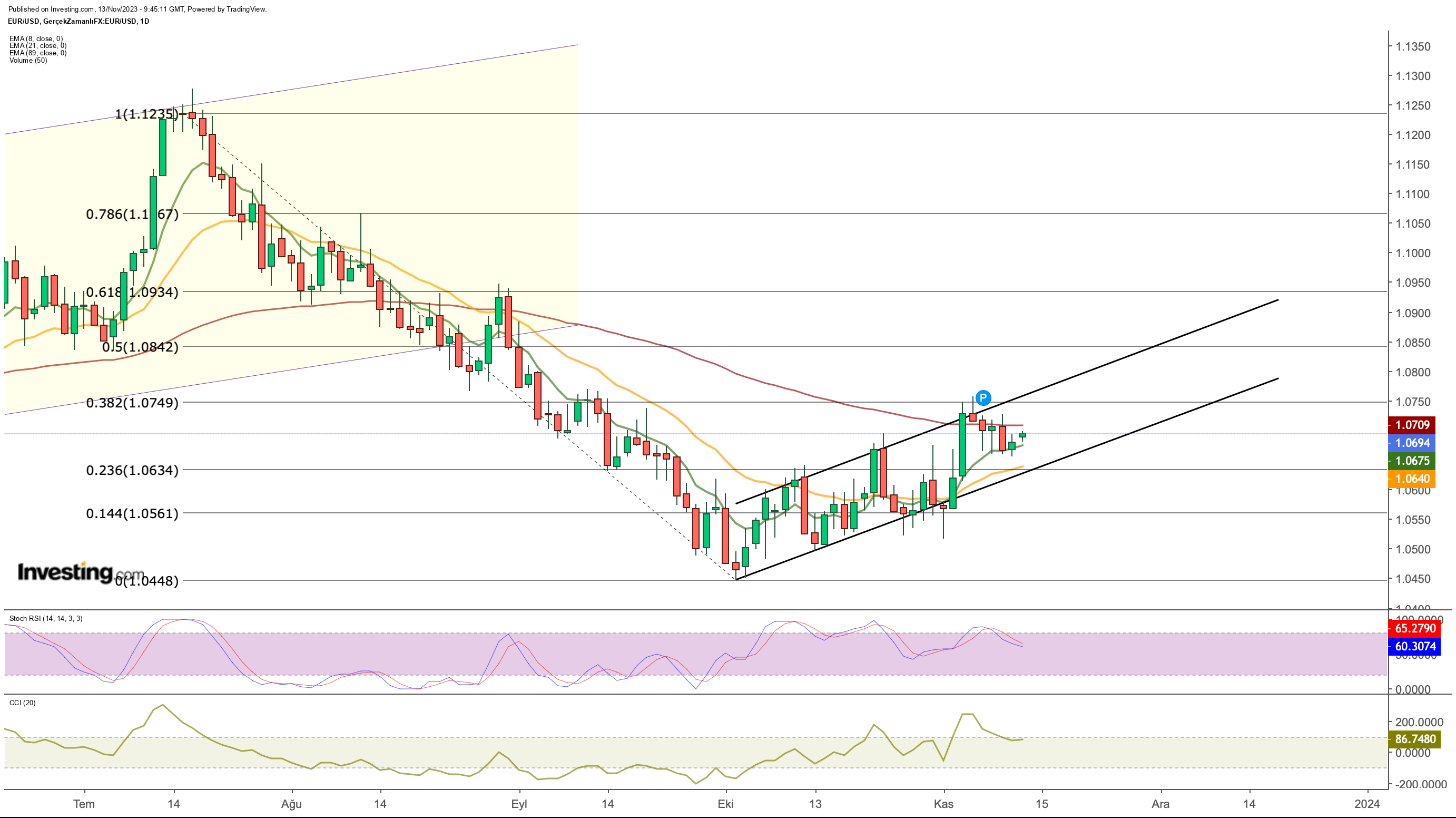- US Dollar Stagnates at 106 Resistance as Investors Focus on Key Inflation Data
- EUR/USD retreats from $1.073 and targets support at $1.067
- Meanwhile, Moody's downgrades the outlook for the US credit rating, causing long-term bonds to rise.
- Lock in your Black Friday profits with up to 55% off from InvestingPro!
Even though the somewhat dovish stance of Fed members led to a surge in risk assets last week, the dollar also saw a partial rally, peaking near 106. After facing resistance at this level, the Dollar stalled as investors took a cautious stance ahead of the next data release.
After the market closed on Friday, international credit rating agency Moody's downgraded the country's credit rating outlook from stable to negative, citing increased downside risks to US fiscal strength, resulting in a partial increase in US long-term bonds. Moody's predicts that the US fiscal deficit will persist at high levels and that debt solvency could weaken significantly without effective fiscal policy measures to reduce government spending and increase revenues, especially with the prevailing high interest rates.
Despite this development, inflation remains a focal point for the market. The Federal Reserve continues to warn that any deterioration in the downward trend in inflation and strong growth data could trigger a return to interest rate hikes. The juxtaposition of financial stress due to high financing costs and the Federal Reserve's determined stance against inflation underscores the critical importance of upcoming inflation data.
Tomorrow, US inflation data for October will decline from 3.7% to 3.3% year-on-year, while it is expected to remain stable at 4.1%. Recent data from the United States reveal signs of weakening economic activity in the country, consistent with expectations of a sustained downward trend in inflation. Consequently, if the Consumer Price Index (CPI) data aligns with or falls below expectations, it may increase risk appetite and ease pressure on the Federal Reserve.
Conversely, a deviation from expectations could lead the Federal Reserve, currently in a cautious stance, to return to more hawkish rhetoric, which could lead to a significant increase in demand for the dollar.
In light of recent events, the dollar index remains technically under pressure. The DXY entered a gradual retracement trend after neutralizing the uptrend in October, finding resistance at 107. Since October, the index has continued to find support at 105.3, while the 106 level tends to become a new zone of endurance.
If the US CPI continues to weaken, it will reinforce the view that the Federal Reserve could close the year leaving interest rates unchanged and we could see the DXY could move below 105 and set its new support at levels of 104.25 in a gradual retracement trend. Anything else would have the effect of weakening risk appetite and could increase demand for the dollar, thus increasing the possibility of the dollar index retesting the 2023 high of 107.
EURUSD
The recovery trend that has continued since October has eased slightly from the upper band of the short-term ascending channel formed last week.

After the bears pushed the euro down from the $1.073 level, the pullback seems restricted to $1.0666.
Currently, the EUR/USD chart highlights $1.067 as the nearest support level, indicating potential advances towards the $1.075 resistance as long as it remains above this threshold this week.
In particular, $1,064 stands out as a solid support point in the lower region, and the pair's close above this level over the weekend supports a moderate appreciation of the euro against the dollar.
On the other hand, if the euro decisively overcomes the resistance of $1.075, especially in conditions that favor greater risk appetite, the pair may see a rapid rise towards $1.09.
Key events in the eurozone this week impacting the EUR/USD parity include the region's third quarter GDP data and CPI data due to be announced on the last business day of the week.
Beyond these crucial figures, speeches by the president and members of the ECB can influence the euro and shape the economic outlook for the eurozone. Investors will closely monitor the ECB's latest views on interest rate policy, taking into account the economic contraction.
In summary, the short-term outlook for the EUR/USD pair may depend on US and Eurozone inflation. If inflation stabilizes due to a more resilient US economy, it could reinforce a more aggressive approach from the Fed, boosting demand for the dollar, which could lead to a weakening of the EUR/USD pair.
However, in this data-heavy week, strong Eurozone numbers and a decisive stance from the ECB can serve as criteria to push the EUR/USD pair higher.
***
Beat the market with InvestingPro's exclusive Black Friday offer
This Black Friday don't miss the opportunity to make your investments work harder for you. Subscribe to InvestingPro now with up to 55% off and secure your position among the smartest traders in the market.

Claim your discount today
**Divulgation: The author does not hold positions in any of the securities mentioned in this report.












